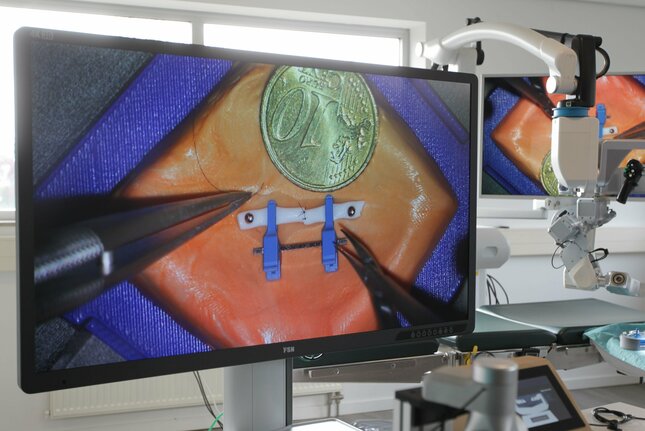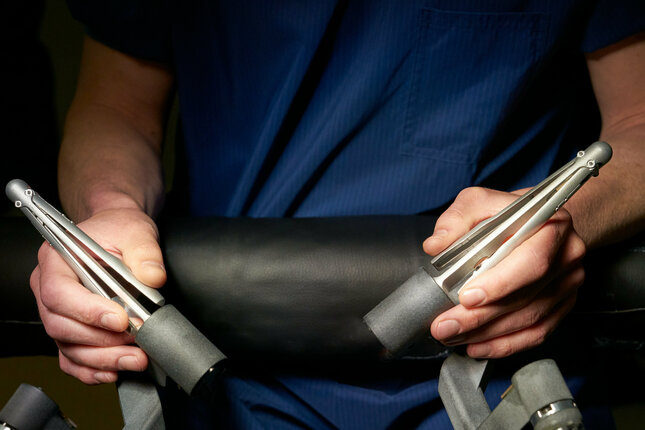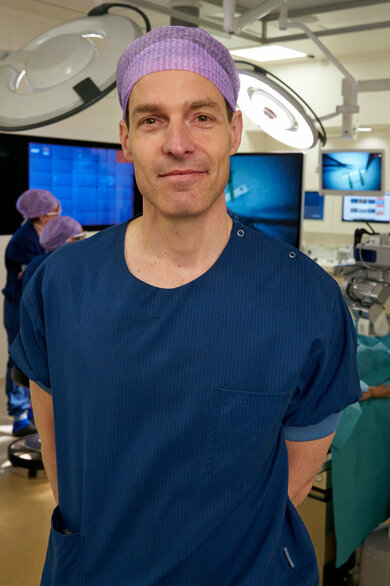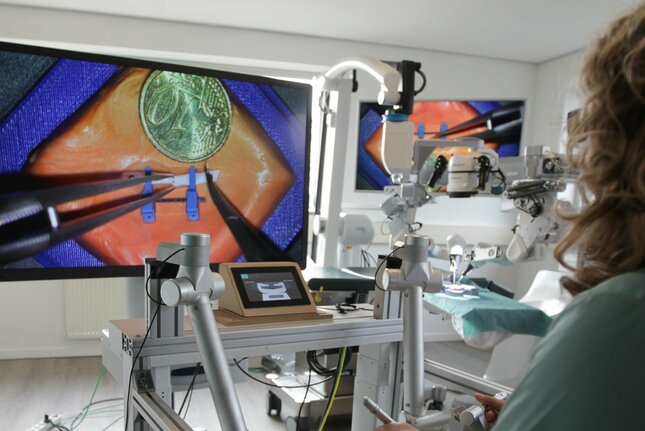Thanks to a newly developed surgical robot, reconstructive surgery can be performed more safely and accurately in the future. This is also expected to lead to fewer complications and faster patient recovery. On October 18th, plastic surgeon Tom van Mulken of Maastricht UMC+ obtained his doctorate in research into this robot, which can significantly improve the precision and efficiency of microsurgical procedures. In doing so, Van Mulken is driven to use his research to contribute to better care, lower costs, and a direct impact on patients' quality of life.

Reconstructive surgery requires tremendous precision. Think of breast reconstruction after cancer treatment or repairing an amputated finger. Surgeons then suture blood vessels, lymphatic vessels, and nerves, often thinner than a millimeter. Van Mulken focused his doctoral research on developing and testing a robot that can support these extremely delicate surgeries.
A precision robotic system
The surgical robot was developed by startup Microsure where Van Mulken works with engineers from Eindhoven University of Technology. It offers the ability to operate with unparalleled precision.
The physician can work with the robotic arm at the submillimeter level where the human hand is limited in its accuracy by vibration and fatigue. This robot allows the physician to suture blood vessels, lymphatic vessels, and nerves with greater precision. In doing so, he uses sutures that are thinner than a hair. This is crucial to the success of such precise reconstructive surgeries.

"The challenge was to develop a technology that is actually applicable in clinical practice," Van Mulken explains. "Through close cooperation between technicians and surgeons, we have developed a system that is not only technically sophisticated but also meets the practical requirements of the operating room. This is a big step forward in improving care for our patients."
Patient's interest
For future patients, robotic-assisted surgeries mean less invasive operations. And a shorter and better recovery process.
Current microsurgical operations are sometimes risky because of the fine motor skills required of the physician. The robot offers the physician more stability and precision. This translates into fewer complications, such as poorly healing wounds or tissue rejection, and a higher success rate.
In addition, the technology offers benefits in function restoration. In breast reconstruction after cancer, for example, not only the shape of the breast is restored, but also the function of tissues and (sensory) nerves in the arm. This greatly impacts the patient's self-image and quality of life.

Improving the quality of operations
"This technology should improve the quality of current microsurgery operations, allowing patients to resume their daily lives faster," Van Mulken said. "Fewer postoperative complications and faster recovery of function, ultimately contributing to improved physical and mental well-being."
This is the purpose of his doctoral research. The first part of the research shows that a doctor can safely and properly perform microsurgeries with the robot. "There is also a faster learning curve for plastic surgeons. As a result, with the robot support, surgeons can perform microoperations independently sooner and continue with the same precision into old age."
Follow-up research is underway to understand patient outcomes better.
Collaboration
The success of the innovative surgical robot comes from an intensive collaboration between clinicians and engineers. This multidisciplinary team turned a clinical problem into a practical, technological solution that is now on its way to widespread hospital implementation.
"It is this collaboration between technology and medical expertise that makes it possible to address complex issues in healthcare," Van Mulken said. "Without this cross-fertilization between different disciplines, we would not have been able to achieve this breakthrough."
The societal impact of these robotics innovations extends beyond direct patient care. Although the initial investment in surgical robots can be significant, the technology provides potentially significant cost savings in the long run. Shorter operative times, fewer complications, and shorter hospital stays result in more efficient care delivery and lower costs for the healthcare system as a whole.

Future
Tom van Mulken's research marks an important step in integrating robotics into the medical practice of microsurgery. The potential of this technology is great and may lead to broader applications, not only in reconstructive surgery but also in other surgical specialties.
As technology continues to develop, the expectation is that more and more hospitals worldwide will embrace these innovations. Van Mulken remains ambitious: "We are only at the beginning. We are currently testing another new generation of the robot in a pilot setup."
"That one will support the surgeon even better. The goal remains to provide patients with the best possible care. This technology will take us further. Thereby, the combination with AI will greatly accelerate the further development of robotics for surgery."
Tom van Mulken's PhD can be viewed via Maastricht University .
His thesis can be read here: Robotic microsurgery in plastic and reconstructive surgery: The journey of creating, introducing and (pre)clinical validation of a new and dedicated robot for microsurgery .






